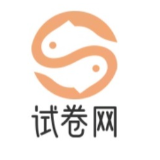当前位置
甘肃开放大学理工英语1期末考试试卷与参考答案
摘要:甘肃开放大学理工英语1期末考试试卷与参考答案
以下是一篇关于《甘肃开放大学理工英语1期末考试试卷与参考答案》的详细学习笔记,按照常规的学习笔记格式进行组织:
关键字: 在线教育平台推荐 终身学习资源平台 教育科技行业趋势分析 远程教学平台功能对比 高考备考技巧与策略 教育数据分析工具应用 学习管理系统比较评测 人工智能职业技能培训课程 数学学科强化训练方法 智能教育系统教学效果
想要快速找到正确答案?
立即关注 国开搜题微信公众号,轻松解决学习难题!

作业辅导
扫码关注
论文指导
轻松解决学习难题!
甘肃开放大学理工英语1期末考试试卷与参考答案
以下是一篇关于《甘肃开放大学理工英语1期末考试试卷与参考答案》的详细学习笔记,按照常规的学习笔记格式进行组织:
甘肃开放大学理工英语1期末考试学习笔记
——试卷分析与备考策略
一、试卷整体结构与题型分布
根据往期考试经验及课程大纲,甘肃开放大学理工英语1期末考试通常包含以下题型,总分100分,考试时间120分钟:
1. 词汇与语法选择题(30分)
- 题量:15题,每题2分
- 内容:涵盖课程中重点词汇、短语、语法结构(如时态、被动语态、条件句、科技英语句型等)。
2. 阅读理解(30分)
- 题量:3篇短文,每篇5题,每题2分
- 内容:科技、工程或理工类主题的文章,要求学生理解细节、主旨、推理及词汇在上下文中的含义。
3. 翻译题(20分)
- 题量:中译英和英译中各5题,每题2分
- 内容:涉及理工专业术语及科技类句子的翻译。
4. 写作题(20分)
- 题量:1题,200词左右
- 内容:科技报告、应用文写作或根据图表/数据撰写短文。
二、重点题型解析与参考答案示例
1. 词汇与语法选择题
考点分析:
- 专业词汇:如"algorithm"(算法)、"circuit"(电路)、"calibration"(校准)等。
- 语法重点:
- 被动语态在科技描述中的应用(例:"The experiment was conducted by the team.")
- 条件句与假设(例:"If the temperature rises, the material will expand.")
- 数字、单位及技术参数的正确表达(例:"The voltage is 5.5 volts.")
典型例题与解析:
例题:
The computer system _______ by the engineer last week.
A) was installed
B) installed
C) is installing
D) installs
答案:A
解析:
句子主语"The computer system"是动作的承受者,需用被动语态。时间状语"last week"表明过去时态,因此选A。
2. 阅读理解题
考点分析:
- 文章主题多涉及理工领域的基础概念(如能源、机械原理、信息技术等)。
- 题型包括细节题、主旨题、推理题及词汇题。
典型例题与解析:
文章节选:
"Renewable energy sources, such as solar and wind power, are critical for reducing carbon emissions. However, their intermittent nature poses challenges for grid stability. Energy storage systems, like batteries, are therefore essential to store excess energy and supply it during low-generation periods."
问题:
What is the main challenge of renewable energy sources mentioned in the passage?
A) High cost
B) Intermittent supply
C) Environmental impact
D) Limited availability
答案:B
解析:
关键词"intermittent nature"直接对应选项B,文中明确指出其导致电网稳定性问题。
3. 翻译题
考点分析:
- 需准确翻译专业术语和复杂句子结构。
- 注意中英文表达习惯的差异(如中文多用主动语态,英文科技文本多用被动语态)。
典型例题与解析:
例题:
中译英:该实验的结果表明,材料在高温下会失去其导电性。
参考答案:
The results of the experiment indicate that the material loses its conductivity at high temperatures.
解析:
- "实验的结果"翻译为"The results of the experiment"更符合科技英语表达。
- "高温下"需用"at high temperatures"而非"under high temperature"。
- "失去导电性"需注意动词时态(一般现在时)和专业术语的准确性。
4. 写作题
考点分析:
- 要求逻辑清晰、用词准确,需结合课程中学习的科技写作规范。
- 常见题型:描述实验步骤、分析数据图表、撰写技术报告摘要等。
典型例题与解析:
题目:
根据以下数据,撰写一篇150-200字的短文,说明太阳能发电在2020-2023年的增长趋势。
| 年份 | 太阳能发电量(亿千瓦时) |
|||
| 2020 | 120 |
| 2021 | 180 |
| 2022 | 250 |
| 2023 | 320 |
参考答案框架:
1. 开头:引入主题,点明时间范围。
"Solar energy generation has experienced significant growth between 2020 and 2023, as shown in the table below."
2. 主体:
- 数据描述:"From 2020 to 2023, the solar energy output increased from 120 billion kWh to 320 billion kWh."
- 增长趋势分析:"This represents a 167% increase over three years, with the most notable rise occurring between 2022 and 2023."
- 可能原因:"The growth can be attributed to advancements in photovoltaic technology and increased government support for renewable energy projects."
3. 结尾:总结或展望。
"Continued investment in solar infrastructure is expected to further boost its contribution to global energy needs."
三、高频难点与应对策略
1. 专业术语混淆
难点:
- 如"resistor"(电阻器)与"capacitor"(电容器)等电子元件词汇易混淆。
策略:
- 制作术语卡片,结合图像或定义记忆。
- 通过阅读科技类文章(如IEEE论文摘要)强化术语应用。
2. 被动语态的灵活运用
难点:
- 科技文本中被动语态占比较高,学生易忽略其必要性。
策略:
- 分析教材中被动语态的例句,总结其在描述客观事实时的使用场景。
- 练习将主动语态句子改写为被动语态,例如:"Scientists conducted the experiment." → "The experiment was conducted by scientists."
3. 长难句理解与翻译
难点:
- 科技文章中常出现复合句,如:"The newly developed algorithm, which optimizes data processing speeds, has been implemented in the latest version of the software."
策略:
- 划分句子主干与修饰成分,先理解核心信息(主干:"The algorithm has been implemented...")。
- 使用"分译法"或"合译法"处理复杂结构,确保译文简洁准确。
四、参考答案解析技巧
1. 选择题
- 排除法:先排除明显错误选项(如时态不符、主谓不一致)。
- 语境代入:将选项代入原文,观察是否符合逻辑与语法。
2. 阅读理解题
- 定位法:根据问题关键词快速定位原文段落。
- 同义替换:注意问题与原文的同义词或近义词转换(如"challenge"对应"problem")。
3. 翻译题
- 直译与意译结合:专业术语需直译,句子结构可适当调整以符合目标语言习惯。
- 检查技术准确性:如单位"千瓦时"应译为"kilowatt-hours"而非"kilowatt hours"。
4. 写作题
- 结构清晰:采用总分总结构,确保逻辑连贯。
- 使用连接词:如"Furthermore", "However", "According to the data"等增强文章流畅性。
- 避免口语化表达:科技写作需正式用语(例:"The results show that..."而非"The results tell us...")。
五、复习建议与时间管理
1. 词汇专项突破:
- 每日复习课程配套词汇表,重点
文章目录
文章作者:开大题库网
文章标题:甘肃开放大学理工英语1期末考试试卷与参考答案
文章链接:https://www.yuyue-exam.com/shou/20865.html
本站所有文章除特别声明外,均采用 CC BY-NC-SA 4.0 许可协议,转载请注明来自开大题库网 !
文章标题:甘肃开放大学理工英语1期末考试试卷与参考答案
文章链接:https://www.yuyue-exam.com/shou/20865.html
本站所有文章除特别声明外,均采用 CC BY-NC-SA 4.0 许可协议,转载请注明来自开大题库网 !
版权所有:开大题库网
文章标题:甘肃开放大学理工英语1期末考试试卷与参考答案
文章链接:https://www.yuyue-exam.com/shou/20865.html
本站文章均来自网上,如侵权,联系站长立即删除。
文章标题:甘肃开放大学理工英语1期末考试试卷与参考答案
文章链接:https://www.yuyue-exam.com/shou/20865.html
本站文章均来自网上,如侵权,联系站长立即删除。
相关文章
- 12025年7月云南开放大学离散数学本科考试参考资料 (1)
- 22025年7月云南开放大学离散数学本科考试参考资料 (1)
- 3广东开放大学数据库安全技术(本)作业答案
- 4广东开放大学工程地质作业答案
- 5广东开放大学行政法与行政诉讼法学(专)作业答案
- 6广东开放大学网络编程技术(本)作业答案
- 7广东开放大学公共政策概论作业答案
- 8广东开放大学质量管理(A)(本专)作业答案
- 9广东开放大学理工英语4作业答案
- 10广东开放大学公务员制度讲座作业答案
- 11广东开放大学外国教育史(本)作业答案
- 12广东开放大学公共行政学作业答案
- 13安徽开放大学毛泽东思想和中国特色社会主义理论体系概论作业答案
- 14广东开放大学金融基础作业答案
- 15广东开放大学纳税筹划作业答案
- 16安徽开放大学农村社会学作业答案
评论留言请发表您的神机妙论……
取消回复
评论列表(共有0条评论)
站点资料

开大题库网是国家开放大学学习者的专属资源平台,整合全国电大系统(含广州、宁波等地方开放大学)的历年考试真题、形考作业参考答案及复习指南。网站支持按课程名称、试卷代码(如1379人文英语3、1255计算机网络等)精准检索,提供试卷下载、答案解析及题库推荐功能。涵盖行政管理、金融学、计算机等热门专业,定期更新最新考试动态与备考攻略,帮助学生高效规划复习计划,一站式解决作业与考试难题。
- 文章53033
- 评论0
- 微语0
搜索
热门文章
最新文章
标签
- 教育信息化区域教育差距
- 虚拟现实教学场景设计提升学习效果策略研究
- 教育公平政策与人工智能技术融合实施路径分析
- 跨文化智能技术全球化人才培养融合路径探索
- 文化遗产数字化传承教育模式创新方法研究
- 智能学习系统城乡教育差距缩小案例实证分析
- 在线教育平台促进区域教育均衡发展路径研究
- 人工智能驱动教育信息化融合策略优化路径
- 智慧物流教学资源包与课程模板下载
- 物流管理课程设计模板下载链接
- 跨企业供应链协同优化案例分析
- 智能分拣系统效率提升技术对比
- 物联网仓储温湿度监控系统应用案例
- 跨境电商物流成本优化策略方案
- 供应链预测软件选型分析报告
- 物流大数据分析工具对比评测
- 智能分拣机器人选型对比案例
- 电商仓储空间利用率优化方案
- 智能面料技术服装教育课程开发与实施
- 在线教育平台支持教育公平性措施
- 个性化学习评估方法模型构建与应用
- 医疗行业数字化员工终身学习平台
- 虚拟设计工具服装远程教育实践教学分析
- 电子认证安全方案设计与实施指南
- 数字品牌营销教育科技产品服装行业应用案例
- 自适应学习算法在混合学习中的作用
- 虚拟现实技术在制造业员工技能提升中的优势
- 绿色技术环保行业数字化学习系统开发案例
- 虚拟课堂协作学习工具开发
- 智能评估系统服装设计学习效果提升路径
- 学习管理系统优化方法及技术路径
- 教育资源共享提升教育公平性案例
- 服装远程教育虚拟实验室优化建设方案
- 教育创新实践策略与案例分析研究
- 化工行业职业健康风险管理体系构建方法
- 可持续服装设计虚拟试穿技术教学应用案例
- 学习分析工具应用效果评估方法
- 混合学习模式与智能教学系统结合
- 智能化数字化转型在制造业流程优化中的应用
- 医疗行业员工终身学习在线教育平台构建策略
- 教育技术应用推动教育平等发展
- 虚拟学习环境构建策略与技术工具
- 智能教学系统开发框架与实现步骤
- 教育信息化平台虚拟服装设计工具整合方案
- 协作学习工具在虚拟课堂中的应用
- 化工行业风险控制与职业资格认证体系应用案例
- 自适应学习算法优化在线学习体验
- 智能面料校企合作课程设计教学策略
- 虚拟现实技术提升工业维修技能培训方法
- 基于人工智能的教育技术应用案例研究



